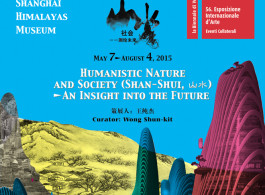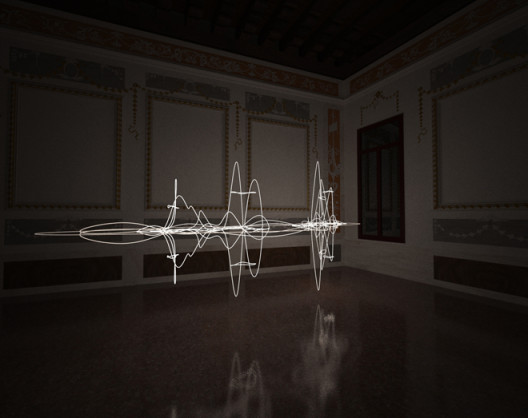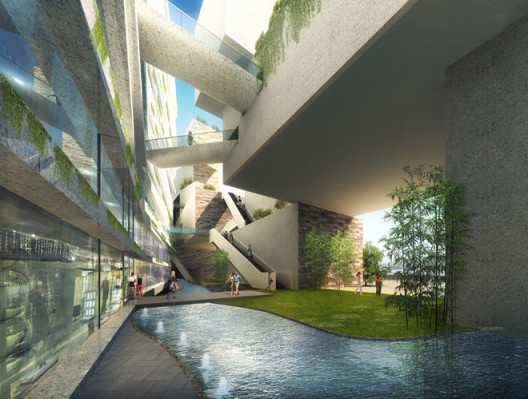Commissioner: Dai Zhikang
Curator: Wong Shun-kit
Artists: He Haixia, Xie Shichen, Chen Bochong, Hu Xiangcheng, Gao Shiqiang, Lee Maelee, Ma Yansong, Ni Weihua, Wang Nanming, Wang Jiuliang, Yang Yongliang, Yuan Shun, Yangjiang Group (Zheng Guogu, Chen Zaiyan, Sun Qinglin)
Opening: 17:00, 6th, May.
Dates: 7th, May – 4th, August, 2015
10:30-12:00, 14:00-18:00 (Tue.- Sun., closed on Mondays)
Venue: Palazzo Ca’ Faccanon, San Marco 5016, Venice, Italy
Panel: Shan-Shui Politics
Time: 3p.m.-5p.m. May 6
Venue: Palazzo Ca’Faccanon
Moderator: Yongwoo Lee
Speakers:
Nicolas Bourriaud (Director, Ecole des Beaux-Art Paris )
Hou Hanru (Artistic Director, MAXXI Rome)
Nikolaus Hirsch (Architect, curator)
Wang Hui (Professor, Tsinghua University)
Alexandra Munroe (Samsung Senior Curator, Guggenheim Museum)
Presented by Shanghai Himalayas Museum and curated by Wong Shun-kit, Humanistic Nature and Society (Shan-Shui) – An Insight into the Future will be unveiled at Palazzo Ca’Faccanon on May 6th, 2015, as one of the collateral events of the 56th International Art Exhibition of the Venice Biennale. Covering a wide range of media including painting, photography, video, installation, sketch, archival documents, the exhibition features thirteen artists /artist collective and three sections: Peach Blossom Spring – The Imagery of the Past, Metamorphosis – The Imagery of the Reality and Shan-Shui Society – The Imagery of the Future.
On the opening day, Yongwoo Lee, director of Shanghai Himalayas Museum, will moderate the forum under the theme of “Shan-Shui Politics”. Nicolas Bourriaud, director of Ecole des Beaux-Art Paris, Hou Hanru, artistic director of MAXXI Rome, Alexandra Munroe, Samsung senior curator of Guggenheim Museum, Wang Hui, professor of Tsinghua University, and Nikolaus Hirsch, Frankfurt-based architect and curator, will join the panel and share their visions and insights of Shan-Shui society.
The “Shan-Shui 山水” (mountain and water) spirit mirrors the ultimate harmony between man and nature that Chinese people have been after for thousands of years. Symbolizing the spiritual dwelling that is brimming with poetic vision and ideal, it could be traced back to the utopian land that was depicted as Peach Blossom Spring; has always been rooted in the traditional and modern delineation of landscape; and can be perceived in the attempts to reflect on and probe into the society in the contemporary context.
When the past, the present and the future meet, our perception, experience and imagination inevitably and intricately intertwine. In the context of contemporary China, the nation’s dramatic development has led to not only material prosperity but also drastically growing desires. Under such a backdrop, what kind of Shan-Shui society would artists envision as a model for the future?
In Peach Blossom Spring – The Imagery of the Past, landscape paintings (high-resolution reproductions) by Xie Shichen (1487- 1567) and He Haixia (1908 -1998), two renowned Chinese landscape painters during the Ming Dynasty and modern times respectively, will be put on display, forming a prelude to the poetically intriguing Shan-Shui context that would elegantly remind people of the long-lasting pursuit for the harmonious state among man, nature and the society.
As time goes by, unprecedentedly drastic changes have been witnessed in the present day. As a result, the cultural root for traditional Shan-Shui spirit seems to have been on the verge of disappearance. Under such a circumstance, how to revive and reconstruct the social value and significance of it? Resorting to their personal experience and insight, the artists manage to give their response in a visual way, inspiring more people to pay attention to issues highly pertinent to the sustainability of human society.
In the second section of the exhibition, Metamorphosis – The Imagery of the Reality, a contemporary and somehow conceptual picture of modern “landscape” will be presented. In Rubbing Drought, the seemingly abstract brushwork stands for the arid riverbed of the Yellow River, the “mother river” of China. The familiar and yet strange images remind people of the increasing deterioration of the environment. Likewise, Wang Jiuliang presents a different landscape of the cities and nature, a landscape of garbage. It takes viewers a closer look to realize that what constitutes the beautiful “landscape” is actually all garbage. Environmental problems are often closely related with the obvious fact seen in China – urbanization. Ni Weihua’s photography and video installation show the skylines of China’s megacities, luxury buildings and lavish gardens, in front of which are those migrants who have flocked into the cities during the dramatic process of urbanization. Surrounded by the glory of cities, but at the same time, they are actually very far from urban life. The constant deconstruction and reconstruction have become a source of inspiration for Yang Yongliang. Under the surface of the seemingly natural landscape, it is the hustle and bustle of urban “cityscape” that dominates his work. Yangjiang Group (led by Zheng Guogu, Chen Zaiyan and Sun Qinglin) manages to bring a fragment of artificial nature into the exhibition hall through their visually stunning installation. Yuan Shun’s installation and photography show a fantasy land featuring an abstract imagery of traditional Chinese landscape. It’s hard to tell whether these sci-fi-like pictures illustrate the ruin of the past or a vision of the future.
With the increasing overlapping of the virtual world and the real one, a more diverse and illusory multi-layered depiction of the globalized world emerges, unleashing a torrent of freedom and potential that have never been imagined before. In Shan-Shui Society – The Imagery of the Future, the third section of the exhibition, artists/architects including Dai Zhikang, Chen Bochong and Ma Yansong share their vision of a future Shan-Shui society in a variety of forms including sketches, architectural model and dialogues, creating an inviting environment to engage people in the exploration of an unknown and yet charismatic future model of the society.
From the delineation of the natural landscape, to the probe into problems that are commonly faced by contemporary people, and then to the presentation of a humanistic approach with a somewhat futuristic touch, the exhibition intends to depict a constantly evolving imagery to inspire more reflection and cast light on an insight to the future in the language of visual art.
SHANGHAI HIMALAYAS MUSEUM
Designed by Arata Isozaki and established by Shanghai Zendai Group in 2005, the Himalayas Museum is a non-profit art institute focusing on art exhibition, education, collection, research and academic exchanges. Other than the main space, Himalayas Museum also has two branch museums: Zendai Contemporary Art Space, consists of galleries and artist studios, it focuses on the study and exploration of experimental and avant-garde art; and Zendai Zhujiajiao Art Museum, located at Zhujiajiao town, a picturesque watertown in southeast of Shanghai suburb, it runs an artist-in-residence program and organizes a variety of public art programs targeting at local community. In recent three years, the museum has presented a series of international art projects including Kenya Hara, Tony Cragg, John Moores, Sean Scully, Kengo Kuma and Michael Craig-Martin, etc.







》,Photography-2009-Weihua-NI-528x352.jpg)
,Harmonious-Nature-from-Diversity,Video,2015李梅利(韩国),由多样性而生的和谐自然,视频(截图),2015-528x296.jpg)